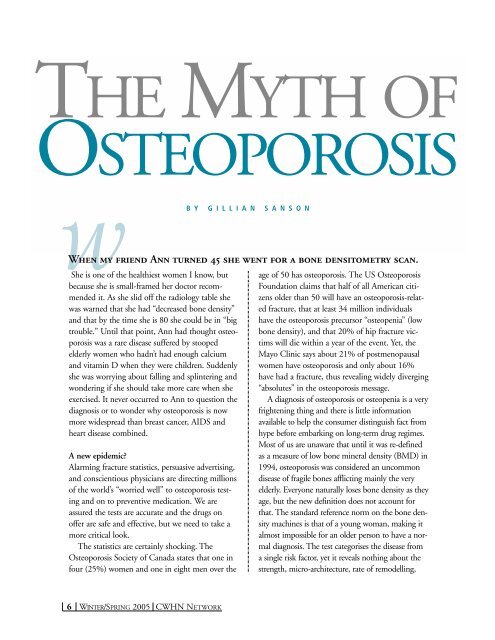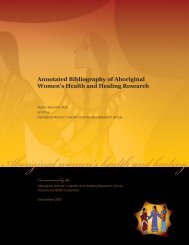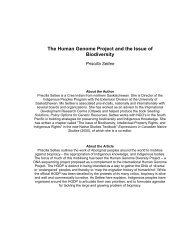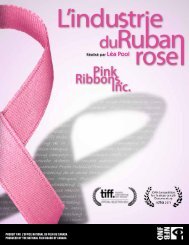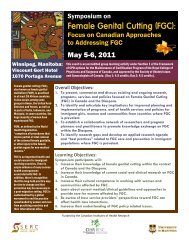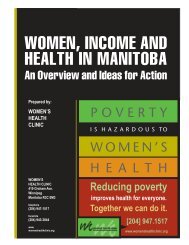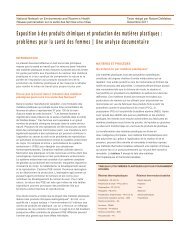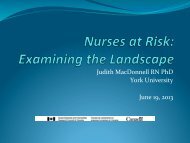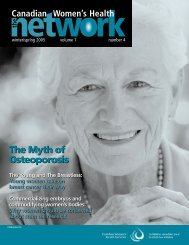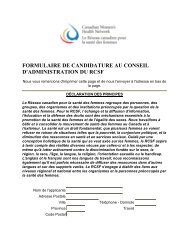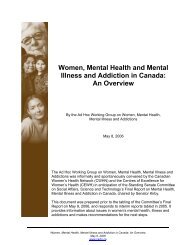NETWORK WIN00 - Canadian Women's Health Network
NETWORK WIN00 - Canadian Women's Health Network
NETWORK WIN00 - Canadian Women's Health Network
Create successful ePaper yourself
Turn your PDF publications into a flip-book with our unique Google optimized e-Paper software.
THE MYTH OF<br />
OSTEOPOROSIS<br />
B Y G I L L I A N S A N S O N<br />
wWhen my friend Ann turned 45 she went for a bone densitometry scan.<br />
She is one of the healthiest women I know, but<br />
because she is small-framed her doctor recommended<br />
it. As she slid off the radiology table she<br />
was warned that she had “decreased bone density”<br />
and that by the time she is 80 she could be in “big<br />
trouble.” Until that point, Ann had thought osteoporosis<br />
was a rare disease suffered by stooped<br />
elderly women who hadn’t had enough calcium<br />
and vitamin D when they were children. Suddenly<br />
she was worrying about falling and splintering and<br />
wondering if she should take more care when she<br />
exercised. It never occurred to Ann to question the<br />
diagnosis or to wonder why osteoporosis is now<br />
more widespread than breast cancer, AIDS and<br />
heart disease combined.<br />
A new epidemic?<br />
Alarming fracture statistics, persuasive advertising,<br />
and conscientious physicians are directing millions<br />
of the world’s “worried well” to osteoporosis testing<br />
and on to preventive medication. We are<br />
assured the tests are accurate and the drugs on<br />
offer are safe and effective, but we need to take a<br />
more critical look.<br />
The statistics are certainly shocking. The<br />
Osteoporosis Society of Canada states that one in<br />
four (25%) women and one in eight men over the<br />
age of 50 has osteoporosis. The US Osteoporosis<br />
Foundation claims that half of all American citizens<br />
older than 50 will have an osteoporosis-related<br />
fracture, that at least 34 million individuals<br />
have the osteoporosis precursor “osteopenia” (low<br />
bone density), and that 20% of hip fracture victims<br />
will die within a year of the event. Yet, the<br />
Mayo Clinic says about 21% of postmenopausal<br />
women have osteoporosis and only about 16%<br />
have had a fracture, thus revealing widely diverging<br />
“absolutes” in the osteoporosis message.<br />
A diagnosis of osteoporosis or osteopenia is a very<br />
frightening thing and there is little information<br />
available to help the consumer distinguish fact from<br />
hype before embarking on long-term drug regimes.<br />
Most of us are unaware that until it was re-defined<br />
as a measure of low bone mineral density (BMD) in<br />
1994, osteoporosis was considered an uncommon<br />
disease of fragile bones afflicting mainly the very<br />
elderly. Everyone naturally loses bone density as they<br />
age, but the new definition does not account for<br />
that. The standard reference norm on the bone density<br />
machines is that of a young woman, making it<br />
almost impossible for an older person to have a normal<br />
diagnosis. The test categorises the disease from<br />
a single risk factor, yet it reveals nothing about the<br />
strength, micro-architecture, rate of remodelling,<br />
6 WINTER/SPRING 2005 CWHN <strong>NETWORK</strong>


